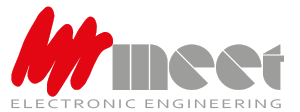Frequently Asked Questions (FAQ)
What materials can the Wavetester measure?
Wavetester can measure the moisture of almost any organic or inorganic material, provided that the material is non conductive or very slightly conductive (otherwise, the microwave gets excessively attenuated). If you would like to know what performance Wavetester can achieve with your material, please Contact us. We can run some complimentary tests with material samples that you send to us and give you a brief report.
Can Wavetester measure the moisture of materials through their package?
Absolutely yes. Typical examples are the measure of materials packed in cardboard or plastic boxes. The only enclosures that cannot be measured through are metallic ones.
What is the range of moisture that can be measured?
We have successfully tested materials with moisture levels ranging from <4% to 40% and over. The actual reading range depends also on the volume of the object to be measured.
What is the measuring speed?
It depends on how the instrument is configured. Typical values are 3 to 8 readings per second.
What precautions must be taken when mounting the sensors (antennas)?
The two sensors (antennas) must be placed so that a microwave can propagate between them. That means that a mounting place must be found where no metal sheets could block the signal.
Are the microwaves emitted by the Wavetester dangerous?
No. The power of the signal is several orders of magnitude smaller than that emitted from a cellular phone.
Can the Wavetester be interfaced to an existing PLC system?
Yes. Wavetester was designed from ground up so that it can be interfaced to an existing plant control system for a closed loop moisture control. Several interfaces are available (for example, a 0-20mA analog output).
Is the Wavetester reading dependent from the temperature?
Experience from the field tells us that the moisture reading provided by the Wavetester is largely unaffected by the object's or the environment's temperature. Actually, since the system does not require a physical contact with the material, it can easily measure the moisture of objects at high temperatures.
Is the Wavetester reading dependent from the sensor-object distance or from the object dimensions?
Sensor-object distance is a system parameter that should be kept constant if possible. The instrument can however re-align itself when this parameter changes. Due to its operating principle, the measure is affected by the distance traveled by the signal inside the material. In applications where the material thickness varies continuously, we add a thickness sensor so that this effect can be automatically compensated.
What software is included with a Wavetester system?
All Wavetester systems are shipped with our WTSX software. This stand-alone application runs under Windows and contains functionalities to calibrate and remotely control the instrument, as well as a graphical user interface indicating the actual moisture reading, along with several additional statistical informations (min, max, std. deviation, etc.). The software is developed directly at our company, meaning that we can react quickly to customer's special requests.
How is the Wavetester adjusted for different materials?
Each family of materials requires its own calibration curve. A calibration curve contains two or more points defining a relationship between the permittivity (the physical quantity that Wavetester measures) and the humidity. Obtaining these relations is a one time initial process, where the same material samples are first measured with the Wavetester and then compared with a reference measure (usually the "oven drying method"). Our WTSX software contains a helper function that makes this process very straightforward. It can be carried out directly by the end user or it can be commissioned to us. WTSX can store and handle up to 15 different calibration curves.

